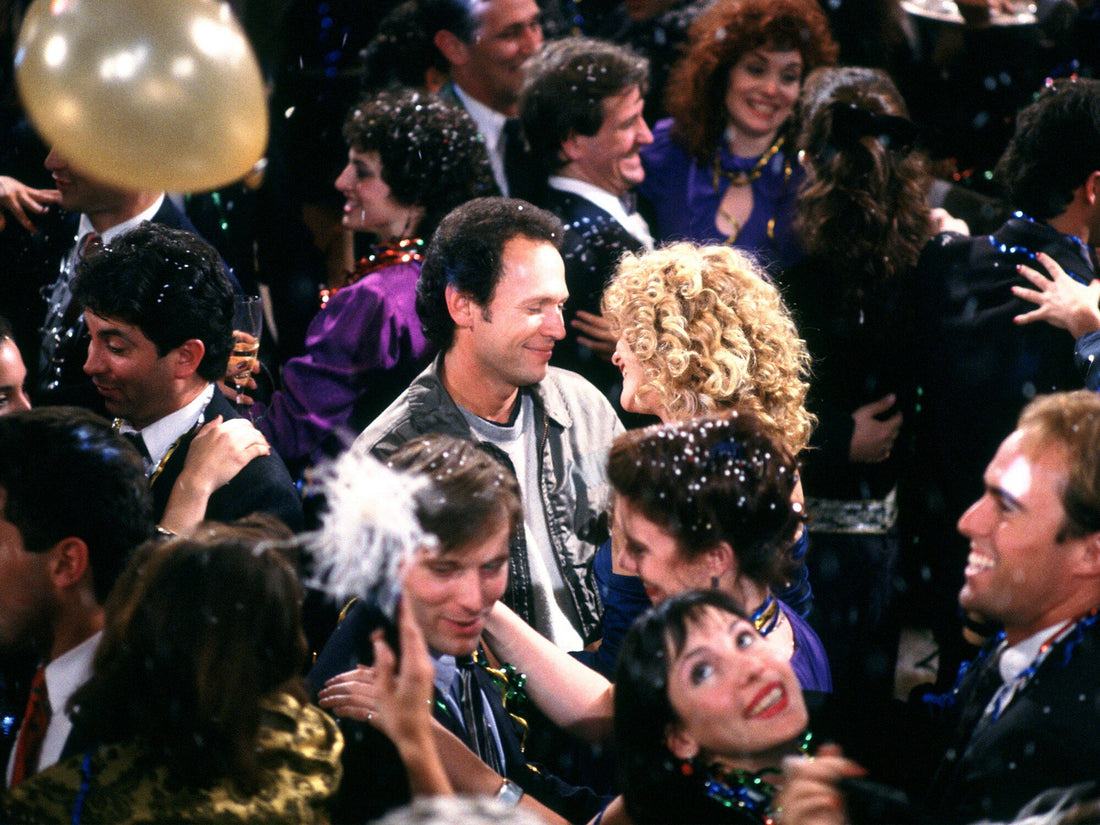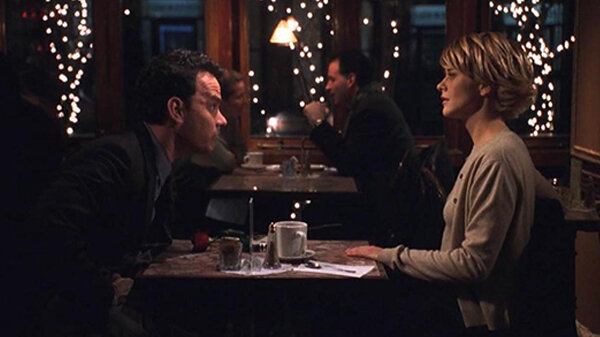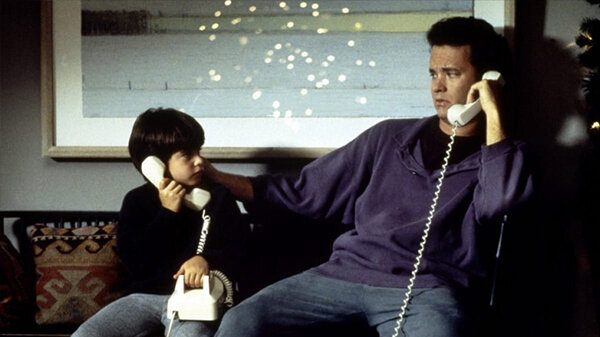Christmas films have become a genre of their own, but where do the irrefutable characteristics lie? Although the seasons might change, the films made by Nora Ephron and Meg Ryan have a certain cosy spirit that feels right at home over the holidays. Marina Vuotto revisits You’ve Got Mail, Sleepless in Seattle and When Harry Met Sally to find out just how much Christmas is enough Christmas.
The essence of the Christmas film is hard to define – there’s the classics, with narratives set in the festive period, and the countless TV films with posters framing a man and a woman dressed in red and green, stood in front of a Christmas tree. But what do we do with films that just so happen to have a couple scenes set around Christmastime? What is the amount of Christmas needed for them to be included in the holiday canon? What is the holiday canon? Based on my research, and the dozens of lists I’ve compared, there simply isn’t one. However, there is one filmmaker whose work is almost omnipresent: Nora Ephron. And, by her side, Meg Ryan.
When Harry Met Sally..., Sleepless in Seattle, and You’ve Got Mail (as I like to call it, the Meg Ryan Trilogy) all have at least one scene set during the holiday period. Yet, notoriously these are films that span months, even decades at a time. Is a couple of festive scenes enough to make these films Christmas Films? Quantitatively, no. But there is something about them, an ineffable quality that associates them with the feeling of coziness and familiarity associated with the best of Christmases, or with an idea of what Christmas should feel like. Like Christmas, the romantic comedy expects participants to give up cynicism and suspend disbelief for a short amount of time in order to be charmed, delighted, warmed up.
“Don’t you love New York in the fall?” writes Ephron through NY152, Tom Hanks’ character in You’ve Got Mail. It’s a rhetorical question, as it is evident that Nora Ephron does, and is determined to make everyone love it too. Fall has become associated with Ephron’s films just as symmetry is associated with Wes Anderson, or frenetic editing with Michael Bay. More than a quirk, Ephron’s use of the season is her films is perfectly aligned with the developments and themes of the plot. In fact, all three mentioned films are structured around the anticipation for one big event: Sam and Annie’s meeting; NY152 and Shopgirl’s discovery of each other’s identity; Harry and Sally getting together. You know it’s going to happen, you want it to happen, and you’ll savour every moment of the build-up. And what is fall, if not a three-month-long build-up to Christmas?
It’s in You’ve Got Mail: the coats get thicker, the fairy lights multiply, the pair of online friends grow ever impatient to meet each other, and set a date just before Christmas. But things don’t work out just because it’s Christmas – NY152 recognises in Shopgirl his business rival Kathleen Kelly, and lets her believe that her blind date never showed up; Kathleen’s shop closes; both of their relationships end. The audience is trained to believe that the festive atmosphere, the desire for things to be beautiful and for people to be good, is enough for things to actually work out. And of course, they don’t – but it’s enough for these characters to set a date that becomes the turning point of the film, the moment in which anticipation and naive fantasies give way to the possibility of a concrete reality.
Sleepless in Seattle begins on Christmas Eve, when Sam’s son calls into a radio station to find a new wife for his father, still mourning the death of the child’s mother. Reluctantly, Sam indulges his son’s Christmas wish and agrees to talk on the radio about his late wife, who “made everything beautiful”, and who he particularly misses around Christmas time. Somewhere on the opposite side of the country, Annie is listening as she’s driving home after introducing her fiancé to her family. She resolves to write a letter to this stranger, who has something about him that seems to be missing in the man she’s engaged to. The essence of Christmas films, for the less cynical, lies precisely in this something: would any of this have happened, if it hadn’t been on a night that we so keenly, if for no real reason, want to believe is special?
All Nora Ephron’s films are made for the less cynical: even Harry Burns, arguably the most cynical character in the trilogy, gives up his stubborn negativity and declares his love for Sally after a 13-year-long courtship, and chooses New Year’s Eve as the day to do it. Despite his claim that it’s “not because it’s New Year’s Eve”, even he is won over by the dramatically sentimental value we project onto the holidays. In fact, Harry and Sally’s first kiss was exchanged exactly one year prior: a bashful one that feels justified, and almost expected, by the circumstances. The kiss is not spoken about, and lingers in the space between the two until they sleep together almost a year later – which sends a panicking Harry running out the door. Again, this happens just before Christmas, giving Harry plenty of time to repeatedly call Sally and beg for forgiveness during “the season of charity and forgiveness, and [...] also the season of grovelling”. And when that doesn’t work, and embarrassing himself by singing over the phone doesn’t work, and he ultimately finds himself roaming the empty streets of New York after spending the holidays alone, he opts for the most romantic move he can think of: running to the party Sally is miserable at, just in time to make his declaration before the New Year’s countdown. It might not be because it’s New Year’s Eve, but it surely helped.
While these might not be conventional “holiday films”, they say something about our expectations towards them: what we feel, what we long for, at a time where everything is supposed to be beautiful and warm – and how we make it so. And therefore, we use the holidays as catalysts to tell one another how we feel. Because, even though we might be aware of the artificiality of it all, reinforced by advertising and kitsch traditions, wouldn’t it be nice for the holidays to be just like in the movies?
Marina Vuotto (@sobmarina_) is a part-time writer and full-time feeler. Her favourite topic is the representation of girls on screen, and she has written about it for Picturehouse Recommends, Reel Honey, and Much Ado about Cinema.



